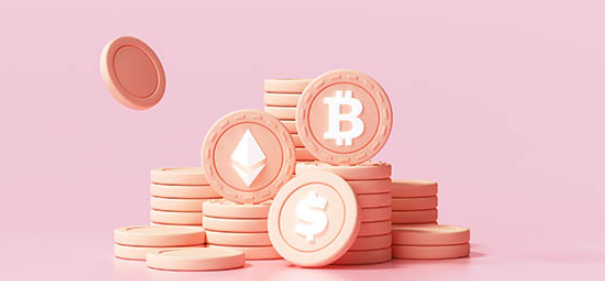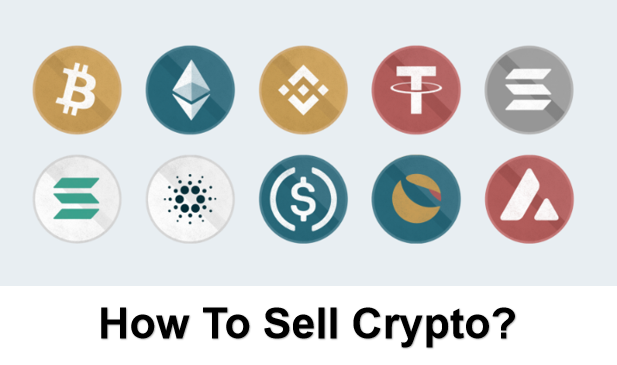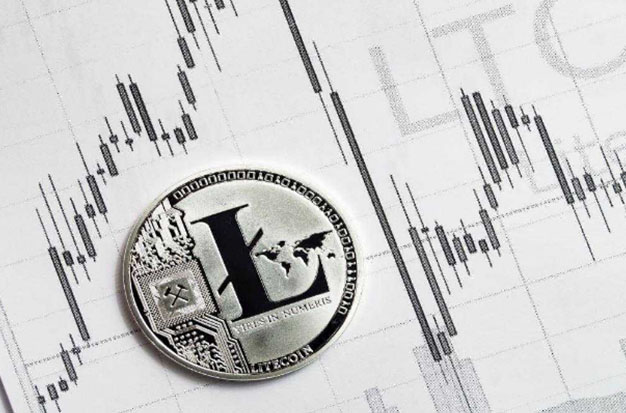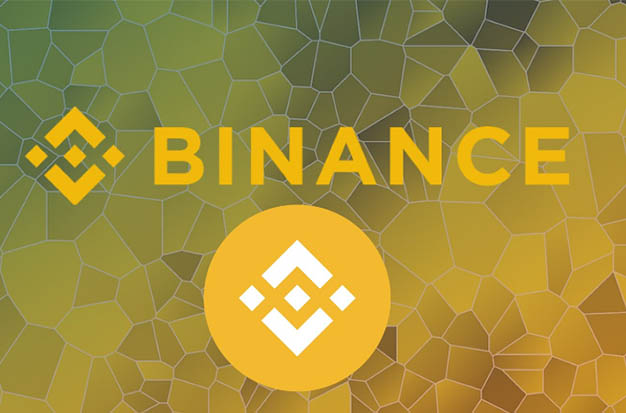Cryptocurrency has become the major driving force in the trading of digital assets as well as s goods and services. With the decentralization of the crypto world more and more are expanding cryptocurrency investments with businesses using the opportunity to engage with a growing tech-savvy demographic offering them opportunities to interact with them through the purchase of goods and services in addition to promotional tokens and collectibles such as NFTs.
Access dozens of different cryptocurrencies selling guides 2022 here.
- How to Sell Litecoin (LTC)
- How to Sell Binance Coin (BNB)
- How to Sell Bitcoin Cash (BCH)
- How to Sell Dogecoin (DOGE)
- How to Sell Ripple (XRP)
- How to Sell Shiba Inu (SHIB)
- How To Sell Solana (SOL)
- How To Sell Ethereum (ETH)
- How To Sell Bitcoin (BTC)
What is Cryptos?
A cryptocurrency (or “crypto”) is a digital asset that can circulate without the need for a central monetary authority such as a government or bank. Instead, cryptocurrencies are created using cryptographic techniques that enable people to buy, sell or trade them securely.
Bitcoin and most other cryptocurrencies are supported by a technology known as the blockchain, which maintains a tamper-resistant record of transactions and keeps track of who owns what. The creation of blockchains addressed a problem faced by previous efforts to create purely digital currencies: preventing people from making copies of their holdings and attempting to spend them twice.
Individual units of cryptocurrencies can be referred to as coins or tokens, depending on how they are used. Some are intended to be units of exchange for goods and services, others are stores of value, and some can be used to participate in specific software programs such as games and financial products.
One common way cryptocurrencies are created is through a process known as mining, which is used by Bitcoin. Mining can be an energy-intensive process in which computers solve complex puzzles in order to verify the authenticity of transactions on the network. As a reward, the owners of those computers can receive newly created cryptocurrency. Other cryptocurrencies use different methods to create and distribute tokens, and many have a significantly lighter environmental impact.
Cryptocurrencies are the first alternative to the traditional banking system and have powerful advantages over previous payment methods and traditional classes of assets. Think of them as Money 2.0. – a new kind of cash that is native to the internet, which gives it the potential to be the fastest, easiest, cheapest, safest, and most universal way to exchange value that the world has ever seen.
How Does Cryptos Work?
Different cryptocurrencies have different digital architectures (code) so how they work varies. As an example, let’s use bitcoin, which is “mined.”
Transactions are sent between peers using software called “cryptocurrency wallets.” The person creating the transaction uses the wallet software to transfer balances from one account (AKA a public address) to another. To transfer funds, knowledge of a password (AKA a private key) associated with the account is needed. Transactions made between peers are encrypted and then broadcast to the cryptocurrency’s network and queued up to be added to the public ledger. Transactions are then recorded on the public ledger via a process called “mining” (explained below). All users of a given cryptocurrency have access to the ledger if they choose to access it, for example by downloading and running a copy of the software called a “full node” wallet (as opposed to holding their coins in a third-party wallet like Coinbase). The transaction amounts are public, but who sent the transaction is encrypted (transactions are pseudo-anonymous). Each transaction leads back to a unique set of keys. Whoever owns a set of keys, owns the amount of cryptocurrency associated with those keys (just like whoever owns a bank account owns the money in it). Many transactions are added to a ledger at once. These “blocks” of transactions are added sequentially by miners. That is why the ledger and the technology behind it are called “block” or “chain.” It is a “chain” of “blocks” of transactions. TIP: I’ve just described how Bitcoin works and how many other coins work too. However, some altcoins use unique mechanics. For example, some coins offer fully private transactions and some don’t use blockchain at all.
Here’s how crypto mining works: networks of specialized computer processors running on vast amounts of electricity and producing an astonishing amount of noise and heat, compete to solve a mathematical puzzle — calculations required to verify the most recent bitcoin transactions, record them on the blockchain and ensure the blockchain is secure. The computer that solves the puzzle first wins a newly minted bitcoin. This design is part of the open-source code created by the anonymous entity, known as Satoshi Nakamoto, who launched bitcoin in 2009.
The blockchain is like a decentralized bank ledger, in both cases, the ledger is a record of transactions and balances. When a cryptocurrency transaction is made, that transaction is sent out to all users hosting a copy of the blockchain. Specific types of users called miners then try to solve a cryptographic puzzle (using software) that lets them add a “block” of transactions to the ledger. Whoever solves the puzzle first gets a few “newly mined” coins as a reward (they also get transaction fees paid by those who created the transactions). Sometimes miners pool computing power and share the new coins. The algorithm relies on consensus. If the majority of users trying to solve the puzzle all submit the same transaction data, then it confirms that the transactions are correct. Further, the security of the blockchain relies on cryptography. Each block is connected to the data in the last block via one-way cryptographic codes called hashes which are designed to make tampering with the blockchain very difficult. Offering new coins as rewards, the difficulty of cracking the cryptographic puzzles, and the amount of effort it would take to add incorrect data to the blockchain by faking consensus or tampering with the blockchain helps to ensure against bad actors.
Read More:
What is Crypto Offerwall Earning Site
What is Crypto ShortLink Earning Site
Why Sell Cryptos?
Whether you trade for fun or for a living, there are always hard choices in cryptocurrency. You may not make the right choice every time, but it’s important to make them without regret. Clarity comes a long way even when the results aren’t in your favor.
Remember to start slow and have a target in mind. Doing extensive research also helps but ultimately, you’re the only one who decides when to sell your crypto.
There are many reasons why you’d want to sell your crypto. Between timing the market and raking in profits, there are a myriad of services available to trade in your cryptocurrencies for some hard cash. Some traders sell to reinvest in other assets. Others sell because they need the money – fast.
Regardless of whether you want it transferred to your bank account, converted to physical currency, or even exchanged for Amazon gift cards, seek and ye shall find. The blockchain space is filled with projects aimed at making the trading experience better, but the abundance of options can leave even experienced traders confused.
Where to Sell Cryptos?
As noted above, when it comes to buying cryptocurrency, you’ll first need to decide what type of platform or service you want to use to purchase crypto. The two most common platforms are crypto exchanges (there are centralized and decentralized exchanges) and crypto brokerages.
Put simply, a crypto exchange is a platform that allows users to buy and sell cryptocurrencies like Ether, Bitcoin, and Dogecoin. They tend to function a lot like traditional stock markets and brokerage firms, except users trade cryptocurrency instead of stocks.
A crypto brokerage, on the other hand, acts as an intermediary between a user and the cryptocurrency markets to facilitate the buying and selling of cryptocurrencies. As a result, users aren’t trading with each other based on current market prices. Instead, the price is set by the broker.
Option 1: Cryptocurrency Exchanges
Cryptocurrency Exchanges often support a wide range of fiat currencies. A crypto exchange can act as an intermediary between sellers and buyers of cryptocurrency. To sell Cryptos for cash, you will first need to set up an exchange account and deposit your Cryptos in the hot Cryptos wallet that is provided by the exchange.
Note that most reputable Cryptos exchanges require their users to provide personal information before they can sell cryptocurrency, in order to comply with KYC and AML rules.
The key advantage of using a cryptocurrency exchange to sell Cryptos for cash is that well-known exchanges have deep liquidity and provide quick access to a large pool of potential buyers.
They are also relatively easy to use: you will need to place a sell offer, define how much cryptocurrency you wish to sell, and set your asking price per unit. The exchange then automatically processes the transaction once your offer is matched.
Option 2: Direct Trades (Person-to-Person)
- Online P2P Selling
- Face-to-face Transactions
Rather than doing the work for you, a peer-to-peer (P2P) exchange lets you choose your price, and the platform helps find a buyer willing to pay it. The two parties then decide between them how to pay. You can sometimes do this on the site — often called direct trades — but normally, you would use a separate bank transfer.
P2P trading allows you to sell cryptocurrency without the limits of an exchange. This means that you could do a wire transfer, send gift cards for popular online stores, trade cash in the real world or even send expensive art if that’s what you want; as long as both parties agree, and you’re in a P2P marketplace that doesn’t limit payment methods.
There are some problems around this, such as what happens if the buyer doesn’t pay up, and the peer-to-peer marketplaces will still have some information on who you are. However, this is still a good step if freedom of choice and minimal interference are your priorities while still having access to things like escrows to hold the Cryptos for protection from fraud.

Option 3: Cryptos ATMs
It may be hard to come to terms with since Cryptos ATMs are directly connected to the internet, but BTMs are entirely secure. BTMs are equipped with technology that protects against software and hardware malfunctions. Malware technology is also not able to threaten Cryptos ATMs. Your digital wallet is encrypted and protected. Without the correct passwords and security credentials, no one aside from you can access your wallet.
A number of Cryptos ATM operators have come together to form the Cryptocurrency Compliance Cooperative to make the use of Cryptos ATMs even safer for the consumer, furthering the legitimization of the cash-to-cryptocurrency industry.
How to Sell Cryptos?
More than a decade into its existence, Bitcoin doesn’t seem to be going away. The cryptocurrency has attracted good and bad headlines as it’s worked its way through multiple peaks over the years, and despite a reputation for volatility, it continues to attract new investors with its promise of market-beating returns.
Cryptocurrency Exchanges
- Step 1: Set up an exchange account
The first thing you need to do is decide which form of money you will accept for your Cryptos.
Now that you know which currency you want in exchange for your cryptocurrency, its time to make an account on a platform that lets you sell your Cryptos.
There are tons of platforms to sell Cryptos on, and the easiest, by far, are exchanges and brokers like Coinbase or Coinmama.
Signing up on Coinbase is really simple – it’s like making an account on Amazon!
- Step 2: Transfer your Cryptos to your exchange wallet
Now that your account is created, you’ll need to deposit your crypto assets on the exchange.
Hit the “deposit” or “sell” button.
You’ll be presented with a wallet address and/or a QR code.
Scan that into your Cryptos wallet and send the amount of coins you want to sell.
- Step 3: Place a sell order
Now it’s time to make a sell offer on the platform you are selling on.
That means determining the price you are willing sell your Cryptos.
The process for doing this always looks a little different on every platform, but for the most part, it works the same way.
Look for the “sell” or “trade” tab, and either sell at the price offered by the broker or create a custom sell order on an exchange order book.
The only difference is, with a broker, you are selling at whatever the spot price is (minus some fees).
With an exchange, you can set whatever price you want. Just don’t expect for the sell to be accepted by any takers if your price is too high.
The nice thing about the crypto exchanges are that the fees tend to be lower than the brokerages.
Direct Trades (Person-to-Person Trading)
- Step 1: Go to the P2P Trading Page
Select (1) “Buy Crypto” then click (2) “P2P Trading” on the top navigation.
- Step 2: Choose to Sell and Set Your Currencies
Click (1) “Sell” and select the currency you want to buy (USDT is shown as an example). Filter the price and the (2) “Payment” in the drop-down, select an ad, then click (3) “Sell”.
- Step 3: Find a Buyer
After the buyer makes payment, the transaction will now display “To be released”. Please make sure that you’ve actually received payment from the buyer, to the payment app/method you used. After you confirm the receipt of money from the buyer, tap “Confirm release” and “Confirm” to release the crypto to the buyer’s account. Again, If you have not received any money, please DO NOT release crypto to avoid any financial losses.
- Step 4: Choose How Much You Want to Sell
Enter the amount (in your fiat currency) or quantity (in crypto) you want to buy and click (2) “Sell”. The transaction will now display “Payment to be made by buyer”.
- Step 5: Send the Offer
You can use Chat on the right side to communicate with the buyer in the whole process.
If you have any issues in the transaction process, you can contact the buyer using the chat window on the top right of the page or you can click “Appeal” and our customer service team will assist you in processing the order.
- Step 6: Confirm the Release
The transaction will now display “Pending Payment”. After the buyer makes payment, the transaction will now display “Confirm Receipt”. Please make sure that you’ve actually received payment from the buyer, to the payment app/method you used. After you confirm the receipt of money from the buyer, tap “Payment received” and “Confirm” to release the crypto to the buyer’s account. Again, If you have not received any money, please DO NOT release crypto to avoid any financial losses.
Cryptos ATMs
- Step 1: Choose withdraw cash
- Step 2: Choose Cryptos (these machines normally may support other cryptocurrencies)
- Step 3: Choose amount to withdraw
- Step 4: Send Cryptoss to given address QR code
- Step 5: Receive cash immediately as Cryptoss transaction is propagated on the network
Read More: How to Buy Cryptos?
Selling Cryptos FAQs
Can I Sell Cryptos for Cash?
To cash out your funds, you first need to sell your cryptocurrency for cash, then you can either transfer the funds to your bank or buy more crypto. There’s no limit on the amount of crypto you can sell for cash.
What Is The Best Way to Sell Cryptos?
If you want to sell cryptocurrencies, opening an account with a cryptocurrency exchange is a great way to start. Crypto exchanges function similarly to online brokerage platforms, providing you with the tools you need to buy and sell digital currencies and tokens like Bitcoin, Ethereum, and Dogecoin.
When choosing a cryptocurrency exchange, it’s important to look at factors such as supported assets, fees, payment methods, and security. To help you find the right exchange, we considered these factors when selecting this list of the best cryptocurrency exchanges.
Many different approaches exist in terms of how to trade cryptocurrencies. In order to start trading cryptocurrencies, one first needs adequate knowledge of the subject. It is also critical to know the associated risks and the laws that may apply based on one’s jurisdiction and decisions should be made accordingly.
A cryptocurrency trade consists of a buyer and a seller. Since there are two opposing sides to a trade — a purchase and a sale — someone is bound to gain more than the other. Hence, trading is inherently a zero-sum game: There is a winner and there is a loser. Having a basic understanding of how the cryptocurrency markets operate can help minimize potential loss and optimize for potential gain.
When a price is agreed upon between a buyer and seller, the trade is executed (via an exchange) and the market valuation for the asset is set. For the most part, buyers tend to set orders at a lower price than sellers. This creates the two sides of an order book.
When there are more buy orders for crypto than sell orders, the price usually goes up, as there’s more demand for the asset. Conversely, when more people are selling than buying, the price goes down. In many exchange interfaces, buys and sales are represented in different colors. This is to give the trader a quick indication of the state of the market at a given moment.
Is It Easy to Sell Cryptos?
Going through an exchange is the quickest and easiest way to sell. An exchange service is a regulated business that interacts with the traditional banking system. An exchange service may take the form of a simple website with limited exchange functionality, a digital wallet with banking connections, or a full-service cryptocurrency exchange with order book, market makers, etc.
When you sell peer-to-peer, you can bypass the traditional banking system to a certain extent by, for example, taking payment in cash, using a payment app like PayPal, or settling the transaction with goods or services. If you know someone who wants to sell bitcoin, you can buy directly from that person. Alternatively, there are a number of platforms that act as a matchmaking service, helping sellers find buyers and vice versa. Buyers and sellers then negotiate trades on a peer-to-peer basis.



